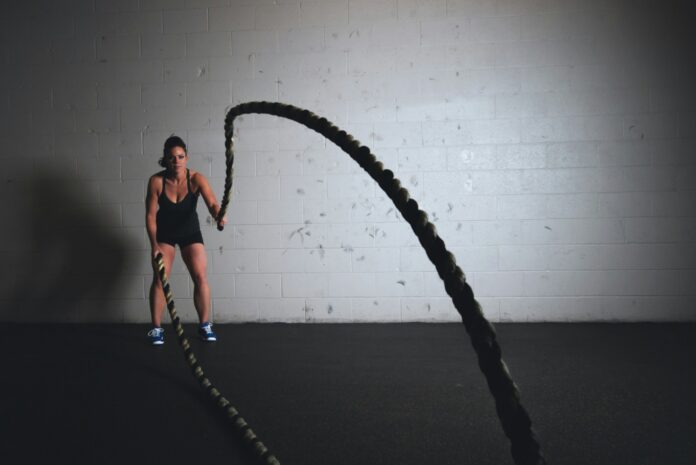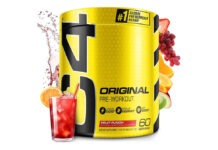The fitness world is no stranger to challenging regimens, but few have captured attention like the 75 Hard program. Lauded for its no-nonsense approach, the program promises physical transformation and mental toughness. However, for many, the reality of 75 Hard is a stark contrast to its promises, leading to a significant number of failures and even hospital visits.
I too was once seduced by 75 Hard. I failed. I was seduced again. I failed. The third time I thought about it and I took a deeper look into WHY I wanted to do it.
I wanted the win; I wanted to say I did it and puff my chest out a bit. Hello, Ego. Not the correct reason for doing any fitness program. 75 hard has good merits, but it falls short every single time. Here’s an in-depth look at why 75 Hard hardly works and how it can be modified for better success.
75 Hard is a self-improvement program created by Andy Frisella, an entrepreneur and fitness advocate. It’s marketed as a “mental toughness” challenge rather than a fitness program. The rules are simple but stringent. Follow a diet with no cheat meals. Complete two 45-minute workouts each day, one of which must be outdoors. Drink a gallon of water daily. Read 10 pages of a non-fiction book. Take a progress picture every day. The program lasts for 75 consecutive days without any breaks. If you miss a task, you start over from day one.
Frisella designed 75 Hard to push individuals beyond their comfort zones, fostering discipline, perseverance and a no-excuses mentality. The program aims to transform not just the body but also the mind, making participants mentally resilient and physically stronger.
Despite its noble intentions, 75 Hard has a high failure rate. According to Frisella himself, around 90% of participants fail to complete the program. Here’s why:
- Unrealistic demands: The requirement to work out twice daily, especially one session outdoors, is daunting for those with full-time jobs, families, or other commitments. Weather conditions and safety concerns can also hinder outdoor workouts.
- Strict diet: Following a rigid diet for 75 days without any indulgences can lead to burnout and binge-eating once the program is over.
- Water intake: Drinking a gallon of water daily can be excessive for some, potentially causing hyponatremia, a condition where the body’s sodium levels become dangerously low. And not enough for others, especially for those who have jobs that require them to be outside, such as landscapers, construction workers, pool cleaners, fishing captains/mates, etc.
- Lack of rest: The program’s intensity leaves no room for rest days, increasing the risk of overtraining, injuries and mental exhaustion.
The extreme nature of 75 Hard has led to numerous health issues. In 2023, some 1,500 people visited emergency rooms or were hospitalized due to complications arising from the program. Common issues included dehydration, overuse injuries and electrolyte imbalances. The fact that it put even just one person in the emergency room isn’t okay, let alone 1,500 in a year when it could have been avoided completely.
While the core principles of 75 Hard have merit, the program needs adjustments to be more sustainable and less risky. Here are some modifications:
- Flexible workouts: Allow participants to choose one or two workouts per day based on their fitness level and schedule. Incorporate rest days to prevent overtraining. Also, if you are going to do two workouts per day, they 100% do not have to be outside. AC was invented, and we should use it. It’s hot out. Working outside in this heat is dangerous.
- Balanced diet: Encourage a balanced diet that includes occasional treats to prevent burnout and promote long-term healthy eating habits. Rome wasn’t built in a day, not even in 75 days, and I am 100% sure your dream body and health outcomes won’t be either. So play the long, long game. You are going to have a birthday, you are going to have a wedding to go to and you are going to have life to battle. Battle it feeling energized with the proper nutrition for your body.
- Customized water intake: Adjust water consumption based on individual needs, considering factors like body weight, activity level and climate. Hello, we are in South Florida, where the sun’s surface is basically inches away from our faces. We need a lot, and I mean a lot, of water and electrolytes, sodium, magnesium and potassium.
- Mental health focus: Incorporate rest and recovery days not only for physical health but also for mental well-being. Encourage mindfulness practices and stress management techniques. And for those who want to say, “But I’ll rest after the 75 days,” okay, but do that, and your muscle build will start to decline, which means your metabolism won’t be burning white hot, and you’re going to be cranky as hell, and no one will want to be around you.
- Progress over perfection: Shift the focus from perfection to progress. Allow for minor deviations without restarting the program, fostering a more positive and achievable mindset. Maybe you can decide with the built-in rest days that you can go a little harder than normal – let that be your progress. Or instead of taking daily photos of yourself, write down how you are feeling daily and let that be your tool to measure your feelings of success.
75 Hard’s appeal lies in its promise of transformation, but its extreme demands often lead to failure and health risks. By making sensible modifications, the core principles of the program can still be preserved while making it safer and more attainable for a broader audience. Fitness and mental toughness are important, but they should be pursued in a way that promotes overall well-being, not at the cost of one’s health. So stop letting the idea seduce you and start a program that is attainable and safe.



























